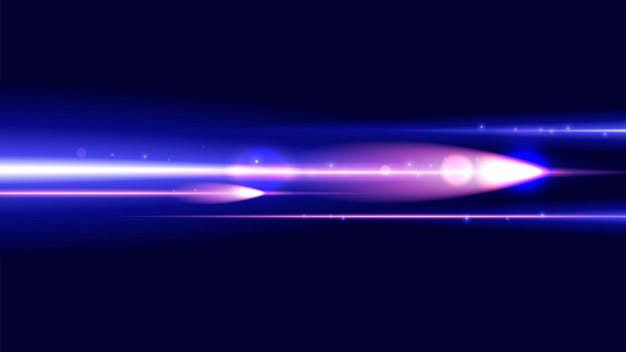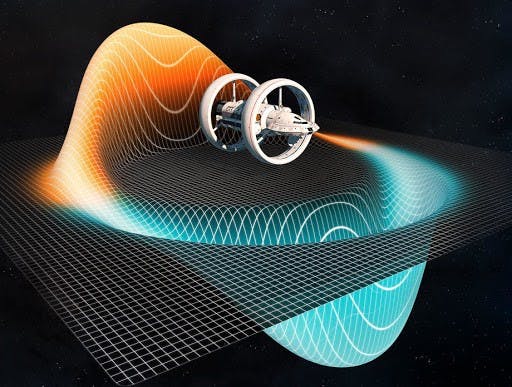Humanity is at the best version of itself. From exploring the deep oceans to colonizing Mars, we have come a long way. The fear of extinction has always pushed a species to evolve and expand. But in this infinite ever-changing universe, it is unpredictable what happens when. The only way to preserve the best form of evolution is to make itself space colonized civilization.
With the latest space technologies, we have been able to find hundreds of habitable planets like Earth. But it’s not only up to searching for a habitable planet just by telescope but exploring and understanding its habitability, soil, and weather conditions to sustain life. But here arises the mammoth problem, it is not possible to explore planets hundreds and thousands of light-years away from us with existing rocket science technology. To make the exploration possible we need a superpower or lordship: ‘The Speed of Light’.
Achieving Speed of Light
The theory of special relativity showed that particles of light, photons, travel through a vacuum at a constant pace of 670,616,629 miles per hour — a speed that’s immensely difficult to achieve and impossible to surpass in that environment. Yet all across space, from black holes to our near-Earth environment, particles are, in fact, being accelerated to incredible speeds, some even reaching 99.9% the speed of light. But based on the current understanding of physics and according to Albert Einstein’s theory of special relativity, summarized by the famous equation E=mc², the speed of light(c) is something like a cosmic speed limit that can’t be surpassed, especially for anything with mass, such as spacecraft and humans.

Even though subsequent generations of scientists and engineers managed to break the sound barrier and defeat the pull of the Earth’s gravity, the speed of light appeared to be one barrier that was destined to hold. But like the unlimited universe, human brains have been blessed with limitless thinking capabilities. This time the idea was to go beyond the theory of relativity. In 1994, a Mexican theoretical physicist Miguel Alcubierre proposed a method for changing the geometry of space by creating a wave. This idea is famously known as ‘The Alcubierre Warp Drive’.
The Alcubierre Warp Drive
The Alcubierre drive or Alcubierre warp drive is a speculative idea based on a solution of Einstein’s field equations in general relativity by which a spacecraft could achieve apparent faster-than-light (FTL) travel if a configurable energy-density field lower than that of vacuum (i.e [negative mass](en.wikipedia.org/wiki/Negative_mass "Negative mass")) could be created. As it is impossible to exceed the speed of light within a [local reference frame](en.wikipedia.org/wiki/Local_reference_frame "Local reference frame"), a spacecraft would traverse distances by contracting space in front of it and expanding space behind it, resulting in effective FTL travel. Objects cannot accelerate to the speed of light within normal spacetime; instead, the Alcubierre drive shifts space around an object so that the object would arrive at its destination more quickly than light would in normal space without breaking any physical laws.

Concept Art of Alcubierre Drive with respect to space-time.
Is it practically possible?
An example of FTL in general relativity is the expansion of the universe itself. As the universe expands, new space is being created between any two separated objects. The objects may be at rest concerning their local environment and with respect to the cosmic microwave background, but the distance between them may grow at a rate greater than the velocity of light. According to the standard model of cosmology, parts of the universe are receding from us at FTL speeds, and therefore are completely isolated from us. As the rate of expansion of the universe diminishes due to the pull of gravity, remote parts of the universe that have been out of light-speed contact with us since the Big Bang are coming over the lightspeed horizon and becoming newly visible to our region of the universe.
Alcubierre has proposed a way of beating the FTL speed limit that is somewhat like the expansion of the universe but on a more local scale. He has developed a “metric” for general relativity, a mathematical representation of the curvature of space, that describes a region of flat space surrounded by a “warp” that propels it forward at any arbitrary velocity, including FTL speeds. Alcubierre’s warp is constructed of hyperbolic tangent functions which create a very peculiar distortion of space at the edges of the flat-space volume. In effect, new space is rapidly being created (like an expanding universe) at the backside of the moving volume, and existing space is being annihilated (like a universe collapsing to a Big Crunch) at the front side of the moving volume. Thus, a space ship within the volume of the Alcubierre warp (and the volume itself) would be pushed forward by the expansion of space at its rear and the contraction of space in front. Here’s a figure from Alcubierre’s paper showing the curvature of space in the region of the traveling warp.

A figure from Alcubierre’s paper showing the curvature of space in the region of the traveling warp.
Implications
The implications of the Alcubierre warp drive for science fiction are fairly clear. If the theoretical and engineering problems could be overcome, we would have FTL travel, fully consistent with general relativity. However, using such a drive would undoubtedly require the manipulation of planet-scale quantities of energy (positive or negative). The user would also have to be very careful to avoid the tidal forces of the distorted-space region at the edges of the flat-space region containing the ship.
And there is also the question of writing the environmental impact statement. What would happen to external objects (space dust, rocks, other ships, asteroids, planets, …) that happened to lie in the path of an Alcubierre ship and entered the region of distorted space-time at the leading edge of the warp, where space is rapidly being collapsed? The nuclei of any matter transiting that region would first experience enormous compressional forces, probably form a quark-gluon plasma reminiscent of the first microsecond of the Big Bang, and then explode in a flood of pi-mesons and other fundamental particles when the compression forces were released, stealing energy from the warp field in the process.
If you like this article do give it a clap and share among your peers and connections.

